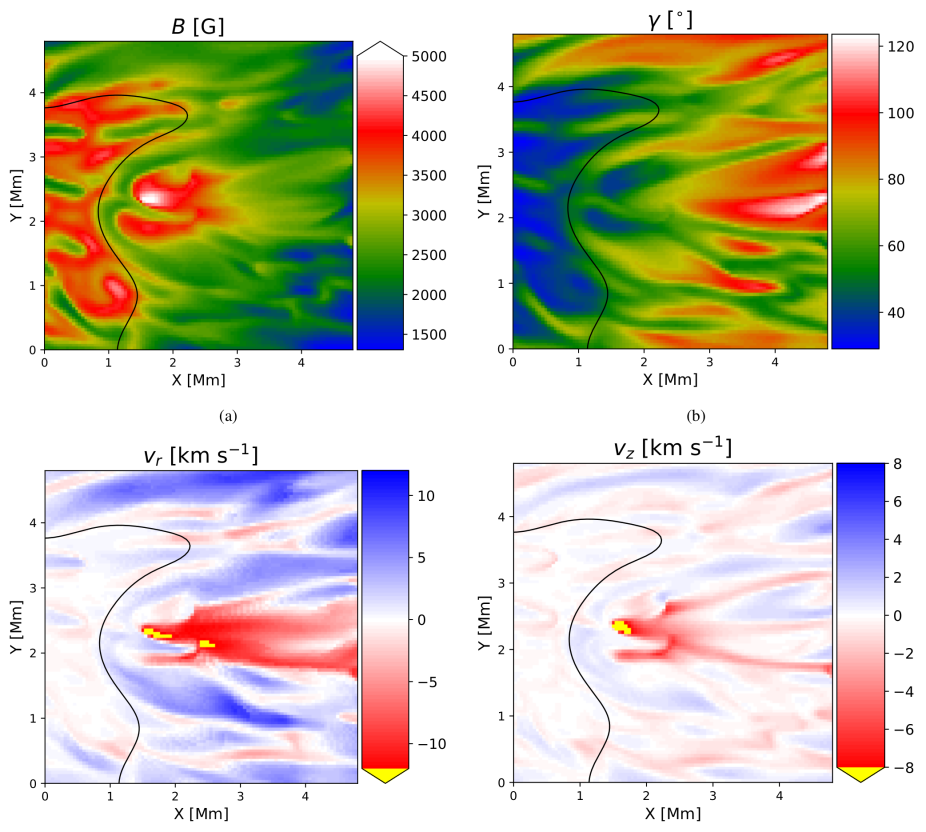Publication Name: Astronomy & Astrophysics; First HAO Author: Matthias Rempel
Recently, there have been some reports of unusually strong photospheric magnetic fields (which can reach values of over 7 kG) inferred from Hinode SOT/SP sunspot observations within penumbral regions. These superstrong penumbral fields are even larger than the strongest umbral fields in record and appear associated with supersonic downflows. The finding of such fields has been controversial since they seem to show up only when spatially coupled inversions are performed.

A portion of the inner penumbra in the MURaM sunspot simulation by Rempel (2015) with some filaments hosting a counter-Evershed flow (see also Siu-Tapia et al. 2018). The maps show: (a) the magnetic field strength B [G]; (b) the field inclination with respect to the vertical [deg], i.e. =0 represents a vertical field of umbral polarity, =90 a horizontal field, and =180 a vertical field of opposite polarity to the umbra; (c) radial flow velocity vr [km/s]; and (d) the vertical flow velocity vz [km/s]. Negative vr and vz values (red-to-yellow colors) indicate inflows and downflows, respectively. This sign convention differs from the one used in observational studies, where negative values denote flows moving towards the observer along the line-of-sight. The black contour lines where placed where the continuum intensity reaches 45% of the quiet sun level to indicate the umbra(left)-penumbra(right) boundary. All maps show the corresponding physical parameters at an optical depth of unity.
Here, we investigate and discuss the reliability of those findings by studying in detail observed spectra associated with particularly strong magnetic fields at the inner edge of the penumbra. We apply classical diagnostic methods and various inversions with different model atmospheres to the observed Stokes profiles, and compare the results with a magnetohydrodynamic simulation of a sunspot whose penumbra contains strong fields associated with supersonic downflows. The large splittings of the Fe I lines, their strong redshifts, and the multiple lobes observed in the Stokes V profiles are indeed unusual and are likely caused by unusually strong magnetic fields and supersonic downflows in the inner penumbra, which are associated to the rare phenomenon of counter-Evershed flows. We find evidence for such strong fields associated to counter-Evershed flows also in the MHD sunspot simulation.